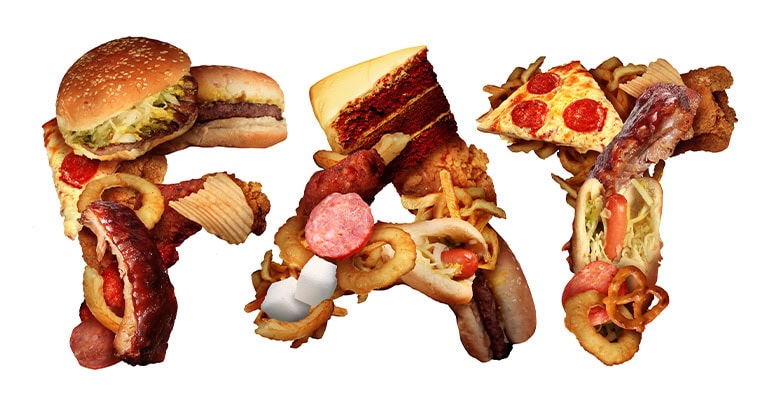Dosing Insulin for Dietary Fat: When it Matters & Why
We live for the taste of fat but our body’s increased insulin resistance and glucose dumping by our liver makes dosing complex

Mmmm, there’s nothing quite as delicious as a high-carb, high-fat meal, right?
If you took the fat out of cupcakes or lasagna or Chinese chicken fingers or pizza, your taste-buds would riot and protest!
If you’ve lived with diabetes long enough, you’ve probably had your share of blood sugar battles with high-fat meals. We discussed an approach to dosing your insulin for those heavy, indulgent meals in this article — but there’s another aspect to dietary fat we haven’t covered yet.
Why and how dietary fat makes you more insulin resistant actually has a lot to do with your liver, not just the rate of digesting the sugar you ate in two cupcakes.
Let’s take a closer look.
Yes, dietary fat can delay digestion by 1 or 2 hours
“When you eat a large amount of fat — over 15 or 20 grams in one meal or snack — this will significantly delay the rate of ‘gastric emptying,’” explains Gary Scheiner, MS, CDE, and owner of Integrated Diabetes Services.
But fat cannot be converted into glucose the way protein can.
Instead, dosing insulin for that high-fat meal comes down to either extending your insulin dose over the course of several hours rather than dosing it all upfront or splitting your dose in half: taking the first half when you start eating and the second half 1 to 2 hours after you finished eating.
Again, you can read more about this in our earlier article on dosing insulin for high-fat, high-carb meals.
But you may notice that even high-fat, low-carb meals leave you with stubborn blood sugar levels, too. This is about your liver.
How large amounts of dietary fat affect your liver’s production of glucose…
The other tricky part of dietary fat comes down to its impact on your liver.
24 hours a day, your liver is producing a small amount of glucose to meet your body’s fuel needs between meals.
Your liver can produce large amounts of glucose from its glycogen stores, however, during certain situations, like during stressful or adrenaline-inducing moments or during dawn phenomenon.
And lastly, your liver will produce more glucose in response to large amounts of dietary fat, explains Scheiner, also the author of Think Like a Pancreas.
“When you eat a high-fat meal, your triglyceride levels go up and your liver becomes temporarily insulin resistant,” adds Scheiner.
Ordinarily, your liver’s output of glucose is suppressed by insulin.
“But if your insulin isn’t working as effectively as usual because of the large quantity of dietary fat, your liver responds by producing more glucose, too.”
The same thing happens when you’re battling a cold or flu or infection, or when you’re taking steroids like prednisone.
This can occur with or without large amounts of carbohydrates in that meal, too, which means that following a high-fat meal, you may see a prolonged rise in blood sugar that requires additional insulin.
In other words: your digestive system and how your body manages what you eat is a complicated beast!
To manage the increased glucose production from your liver, Scheiner suggests three different options:
For insulin pumps:
- Set a temporary basal rate increase by 50% for 8 hours after the meal
- Use a small dose of old-school slower “NPH” or “Regular” insulins after the meal with guidance from your doctor. NPH works in your body for 8 to 10 hours, Regular works for 4 to 6 hours.
- In addition to splitting your meal dose as described above, give a little extra 2 to 4 hours after the meal.
As always, discuss any major changes in your insulin dosing regimen with your healthcare team! Or work with Gary and his awesome team of diabetes management experts via video or phone at IntegratedDiabetes.com!